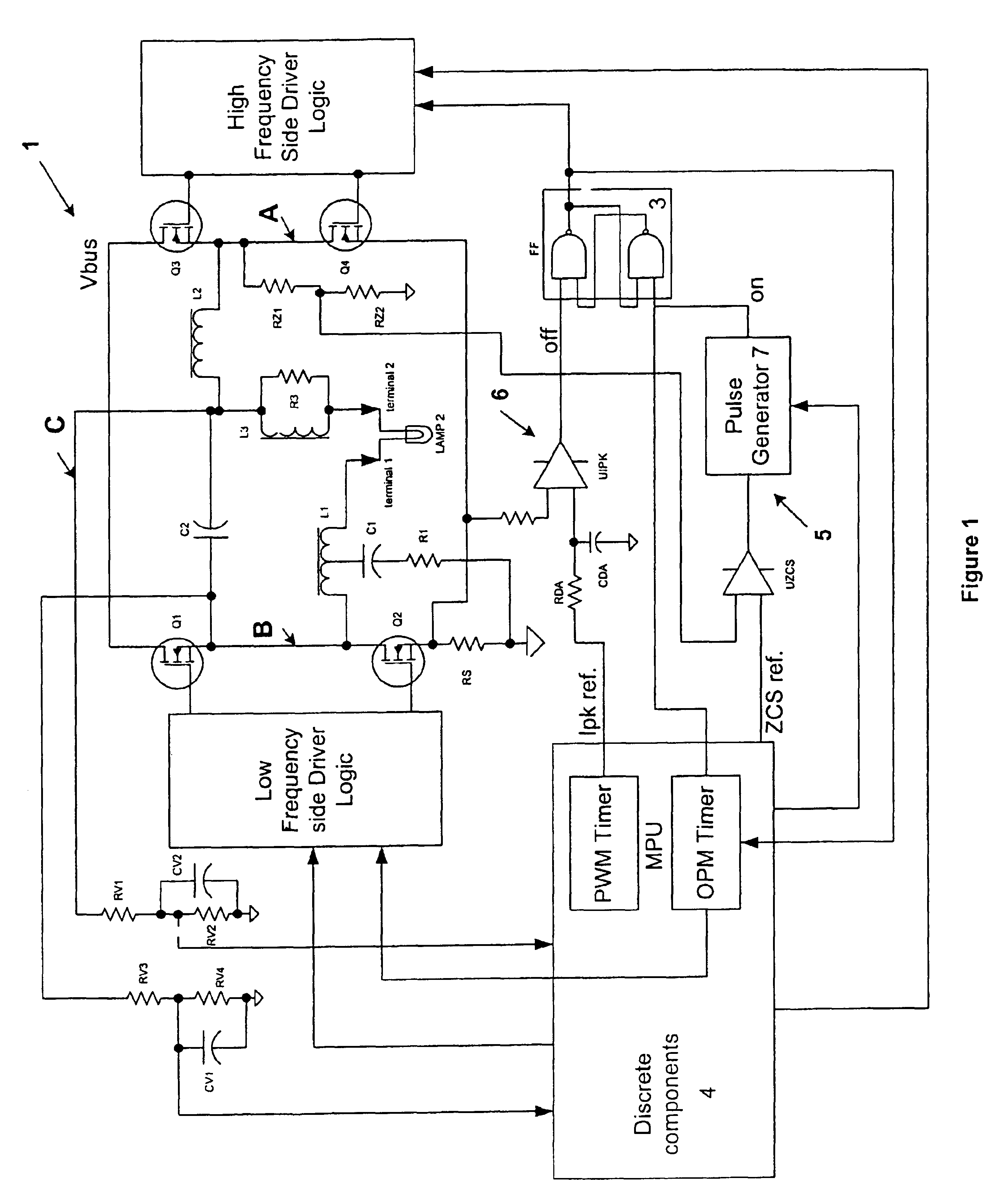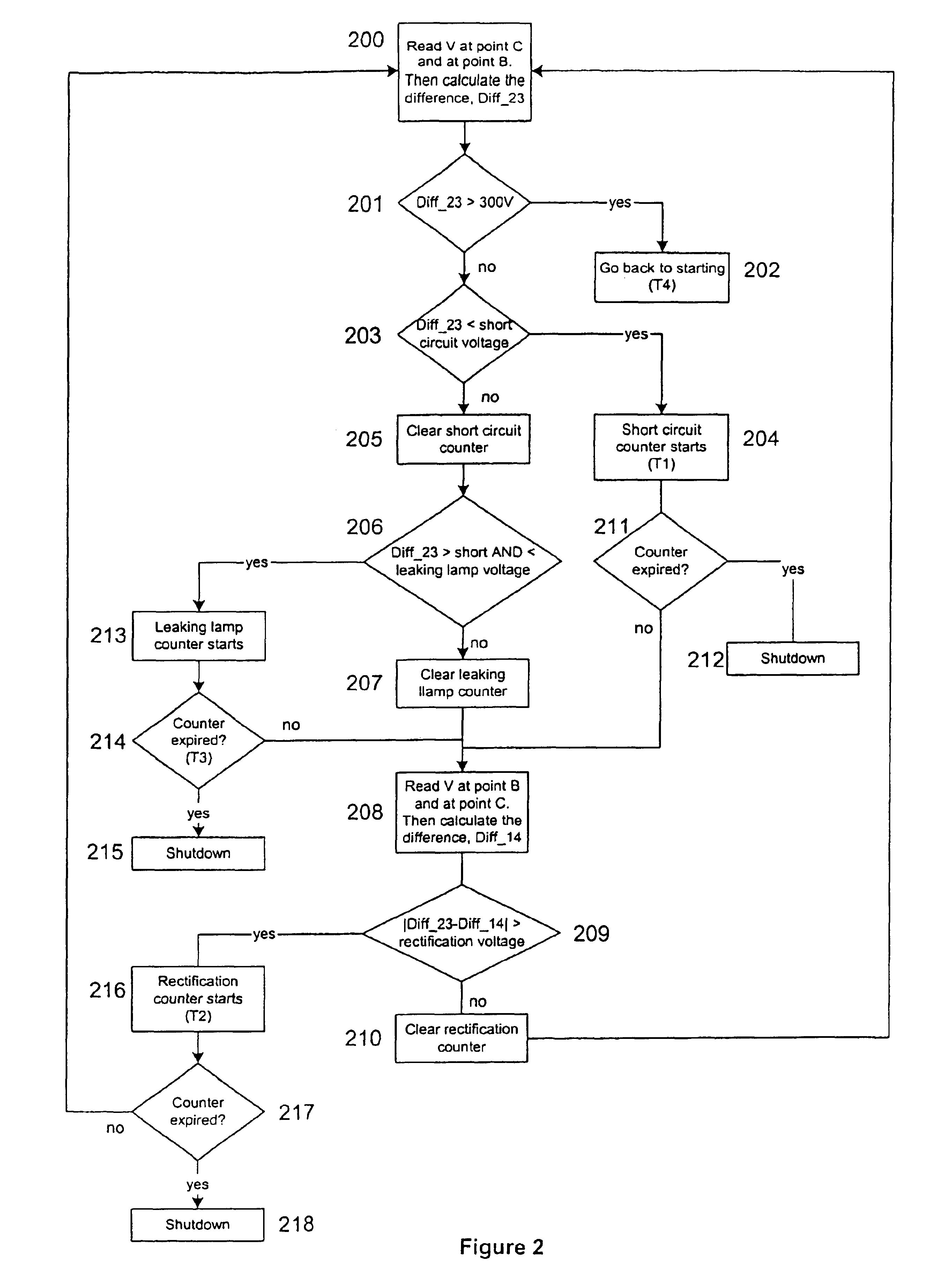Method and circuit for driving a gas discharge lamp
a technology of gas discharge lamp and circuit, which is applied in the direction of electrical equipment, instruments, light sources, etc., can solve the problems of device failure to provide a way to overcome other sensed non-normal performance parameters of the lamp circuit, device lack of ability to protect the circuit during normal operation, etc., and achieve the effect of reducing lamp power and power loss
- Summary
- Abstract
- Description
- Claims
- Application Information
AI Technical Summary
Benefits of technology
Problems solved by technology
Method used
Image
Examples
Embodiment Construction
The particulars shown herein are by way of example and for purposes of illustrative discussion of the embodiments of the present invention only and are presented in the cause of providing what is believed to be the most useful and readily understood description of the principles and conceptual aspects of the present invention. In this regard, no attempt is made to show structural details of the present invention in more detail than is necessary for the fundamental understanding of the present invention, the description is taken with the drawings making apparent to those skilled in the art how the forms of the present invention may be embodied in practice.
FIG. 1 shows a preferred embodiment of the present invention in a block diagram of a circuit 1 that drives a gas discharge lamp 2. The gas discharge lamp 2 is connected to two terminals (terminal 1 and terminal 2). Switching devices Q1-Q4 are configured to create a full bridge switching configuration. An inductor L1, capacitor C1, a...
PUM
 Login to View More
Login to View More Abstract
Description
Claims
Application Information
 Login to View More
Login to View More - R&D
- Intellectual Property
- Life Sciences
- Materials
- Tech Scout
- Unparalleled Data Quality
- Higher Quality Content
- 60% Fewer Hallucinations
Browse by: Latest US Patents, China's latest patents, Technical Efficacy Thesaurus, Application Domain, Technology Topic, Popular Technical Reports.
© 2025 PatSnap. All rights reserved.Legal|Privacy policy|Modern Slavery Act Transparency Statement|Sitemap|About US| Contact US: help@patsnap.com



